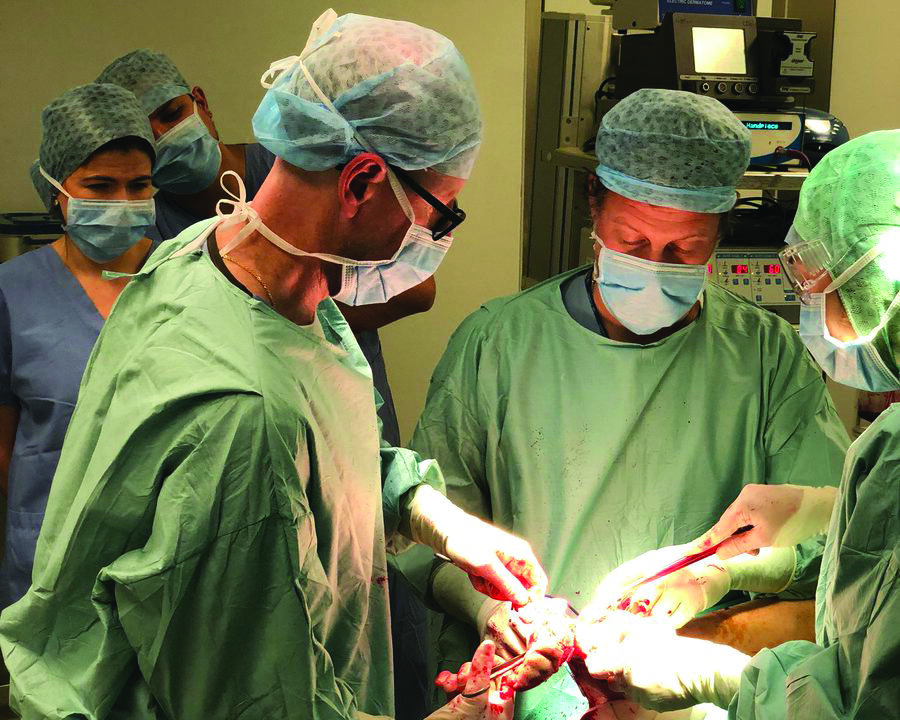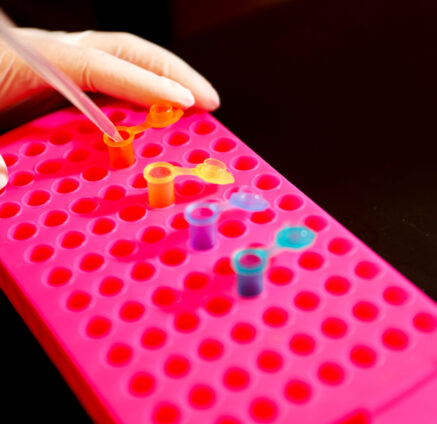A Smart Boot and Digital Monitoring Platform to Improve Wound Healing for Diabetic Foot Ulcer
July 22, 2025Dr. David G. Armstrong at the University of Southern California has dedicated his career to caring for people’s feet. His PhF-supported research focuses on helping patients better manage diabetic foot ulcers (DFUs) using digital health technologies.
For patients suffering from diabetic foot ulcers, exercising may feel like a catch-22. Exercise helps regulate blood sugar levels for people with diabetes, but activities that put too much pressure on the foot can delay wound healing.
David G. Armstrong, DPM, MD, PhD, a distinguished professor of surgery and neurological surgery at the University of Southern California, has dedicated his career to caring for people’s feet. His latest research, funded by a $500,000 PhRMA Foundation grant, focuses on helping patients better manage diabetic foot ulcers (DFUs) using digital health technologies to enhance limb preservation and reduce health disparities for disadvantaged populations.
“The big idea is to eliminate preventable amputation in diabetes over the next generation,” Armstrong said.

The study is investigating the clinical effectiveness of pairing a smart offloading boot with a smartwatch-based remote patient monitoring system. The boot is designed to reduce pressure on foot wounds and is equipped with sensors that track, in real time, the user’s adherence to prescribed offloading, as well as weight-bearing activity and walking cadence — a potential indicator of muscle loss due to limited mobility.
Paired with a smartwatch, the system enables real-time data analysis and delivers push notifications to support patient engagement and adherence. Additionally, the remote monitoring platform helps clinicians interpret digital biomarkers related to wound healing and offers personalized insights to guide treatment decisions.
“There are tons of data that we are trying to crunch and untangle to learn why some patients have good wound healing and some don’t,” said co-investigator Bijan Najafi, PhD, professor of surgery and research director at the UCLA Center for Advanced Surgical & Interventional Technology. The goal is to use this data to better tailor interventions to ensure personalized wound care.
The research also seeks to address health inequities in DFU through these innovative digital health technologies. Black, Hispanic, and Native American individuals, as well as those from rural communities and lower socioeconomic backgrounds, are more likely to suffer from DFUs and subsequent amputations. The study has enrolled approximately 20% Black, 50% Hispanic, and 10% Native American individuals, including from low socioeconomic backgrounds.
 Armstrong hopes that pairing the smart boot with the remote monitoring platform could reduce disparities in health care access and outcomes for those in rural areas who cannot easily travel to health care sites. He also plans to work with patients to calibrate the features of the platform’s user interface to better resonate with different minority populations to encourage use and adherence.
Armstrong hopes that pairing the smart boot with the remote monitoring platform could reduce disparities in health care access and outcomes for those in rural areas who cannot easily travel to health care sites. He also plans to work with patients to calibrate the features of the platform’s user interface to better resonate with different minority populations to encourage use and adherence.
Early results from the study have shown unexpectedly rapid uptake and impact of the platform, Armstrong reported. Patient adherence to offloading protocols improved substantially with the integration of real-time feedback and smart nudging tools.
“There are all kinds of data streaming in, and the problem is it makes people sometimes want to just turn it off, especially folks who have so much else going on with their lives,” Armstrong said. “How do we make something that’s actionable to help them do what they know they should already be doing? This grant has helped us figure that out.”
The research team has added an AI chatbot to the platform that provides personalized patient education and support. For instance, patients can ask the chatbot questions such as, can I wear the smart boot while driving? Armstrong said patients who have engaged with the chatbot have been more adherent and are healing better. The team is currently working on a feature that allows the patient’s clinician to engage in the chat as well as launching Spanish and Mandarin versions of the chatbot.
The research team has encountered challenges such as patient discomfort with device use and resistance to rigid adherence schedules, especially among working patients and caregivers. To address this, the team is adjusting its AI approach with more personalized prompts tailored to each patient’s mood, usage history, and engagement pattern. “This adaptive strategy was central in shifting patient sentiment and improving sustained use of prescribed interventions,” Armstrong reported.
For the next phase in the project, the team is expanding study enrollment and initiating a randomized controlled trial focusing on wound healing and limb preservation as primary outcomes. Armstrong’s research aims to lay the foundation for more interactive and responsive wound care management, with data-driven decisions that expedite healing and improve patient outcomes.
Armstrong and Najafi have ongoing discussions with Food and Drug Administration (FDA) officials on regulatory approval pathways for interoperable medical devices for wound care. They will examine the utility of their DHT-derived data with FDA officials to determine whether alternative regulatory pathways are possible for DHT-coupled remote patient monitoring devices.
“Dr. Armstrong’s work stands out because it supports diabetic wound care while also tackling core challenges in DHT development,” said PhRMA Foundation President Amy M. Miller, PhD. “These kinds of novel digital health tools that can potentially be adapted for other use cases are exactly what we had in mind when launching this program. These innovations will hopefully make regulatory decision-making more precise, equitable, and patient-centered.”
